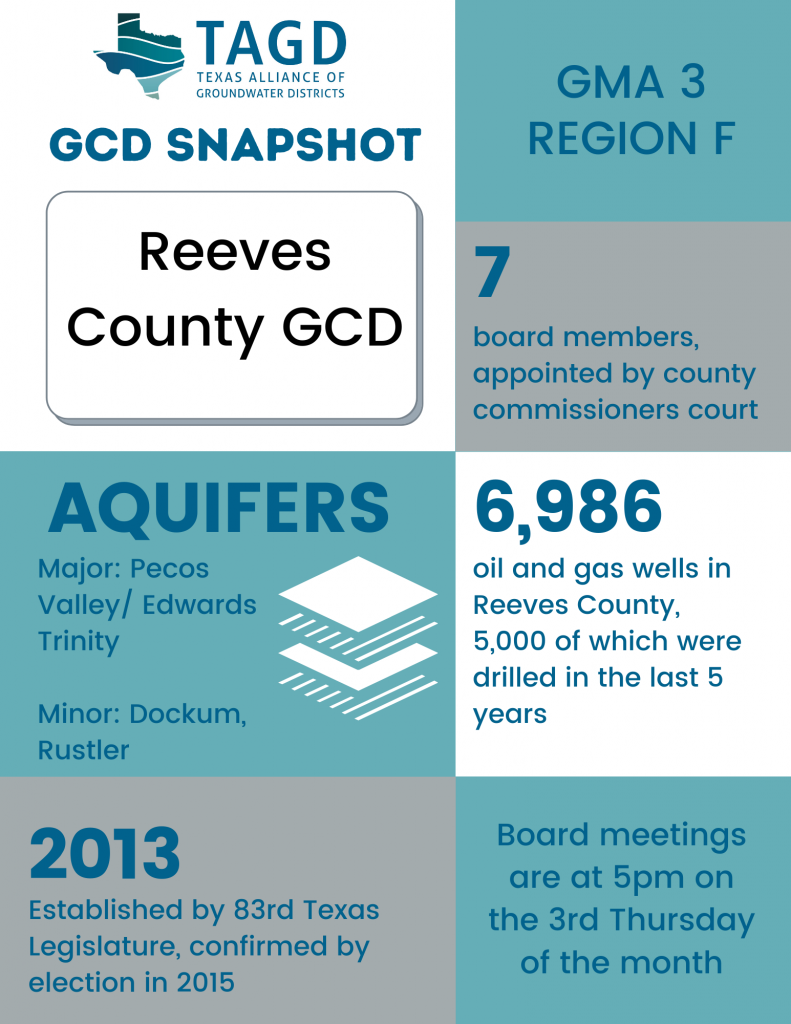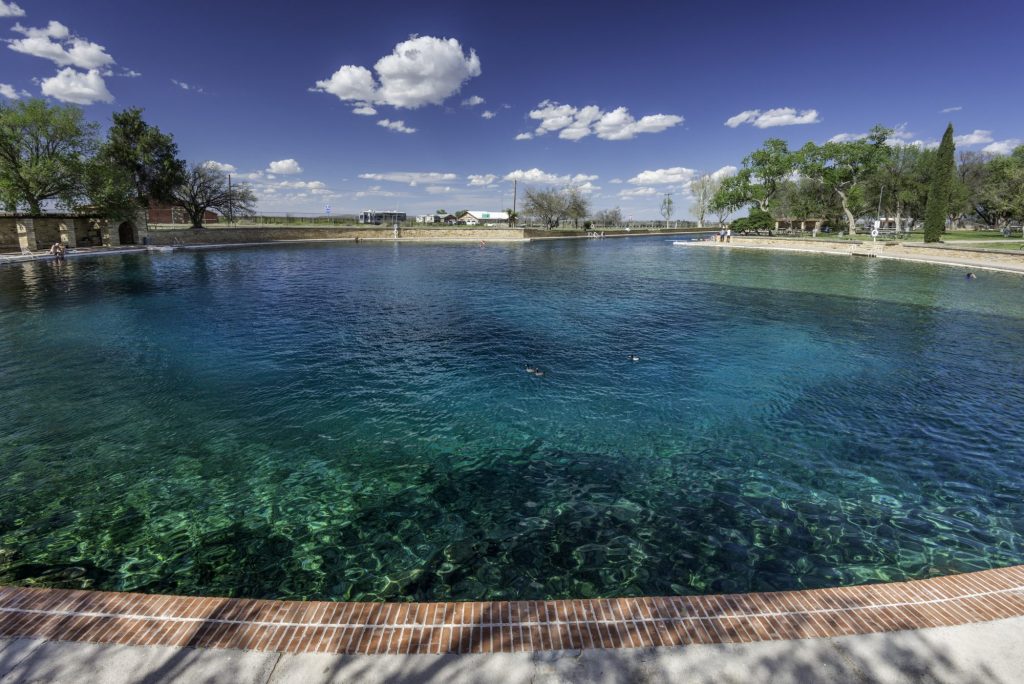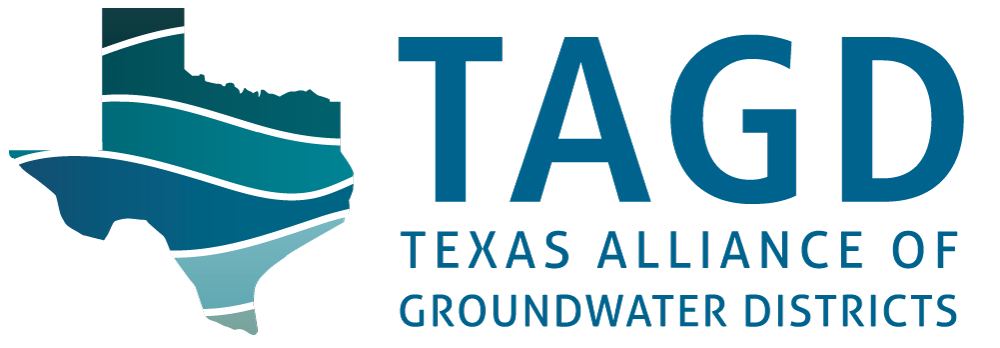Reeves County GCD

Reeves County Groundwater Conservation District is among the newest districts, created in 2013 by the 83rd Texas Legislature and confirmed in November 2015. The district covers all of Reeves County, an area of approximately 2,640 square miles in West Texas near the New Mexico border.
Rule Adoption & Outreach

San Solomon Springs feed a 3-acre swimming pool in Balmorhea State Park in Reeves County.
Reeves County GCD adopted its first set of rules in September 2019, with a mission rooted in groundwater conservation, availability, and equity. Here are some highlights:
- All wells are subject to spacing requirements and new non-exempt wells must obtain a drilling permit.
- Drilling permits and production permits for wells producing greater than 100 gallons per minute (gpm) are subject to a public hearing and the associated notice requirements.
- The limit for production permits is 6 acre-feet per contiguous acre or the production capacity of the well, whichever is less.
- Existing wells may obtain historic use status and can be allowed production over 6 acre-feet per contiguous acre if beneficial use can be proven for any 12-month period preceding the rules adoption.
- In addition to the exemptions listed in the Texas Water Code, wells in Reeves County GCD that are exempt from permitting requirements include domestic and livestock wells producing 20 gpm or less; and wells drilled to supply water to an oil and gas rig for the purpose of well completion, workover, hydraulic fracturing, hydrostatic testing, tank and cellar cleaning, and dust suppression.
The district has established a two-year grace period after the rule adoption for existing wells to be registered in order to secure their historic use status. Letters and postcards have been mailed to all land owners in the county and the district has begun to reach out to all well owners listed in the Texas Water Development Board well database. The district estimates that there may be around 4,000 water wells in the county, but only 653 have been registered with the district so far. By understanding the number of active wells and their annual production, as well as increasing the number of monitor wells throughout the county, Reeves County GCD is diligently working to collect adequate data that will allow it to accurately manage the county’s groundwater resources.

Impact of Oil & Gas Industry
The dominant water use in Reeves County GCD is for the oil and gas industry – according to the Texas Railroad Commission, over 5,000 wells have been drilled for that use in the last five years. “Reeves County GCD embraces the oil and gas industry and is committed to ensuring that all property owners are able to benefit from their groundwater resources,” says Greg Perrin, General Manager.
Since demand can be unpredictable, water use associated with the oil and gas business is subject to the same “boom and bust” patterns. The district’s rule acceptance process took place in the latter stage of the recent boom, so many wells were drilled before the rules were implemented. Now in the throes of the coronavirus pandemic and economic downturn, oil and gas production has virtually halted in Reeves County. While this has certainly resulted in a decrease in groundwater pumping, it has also presented another challenge – with the oil and gas industry at a standstill, many employees have been laid off or furloughed, which makes it difficult for district staff to reach the well owners for registration. Nevertheless, Reeves County GCD remains hard at work to register wells under its rules.
